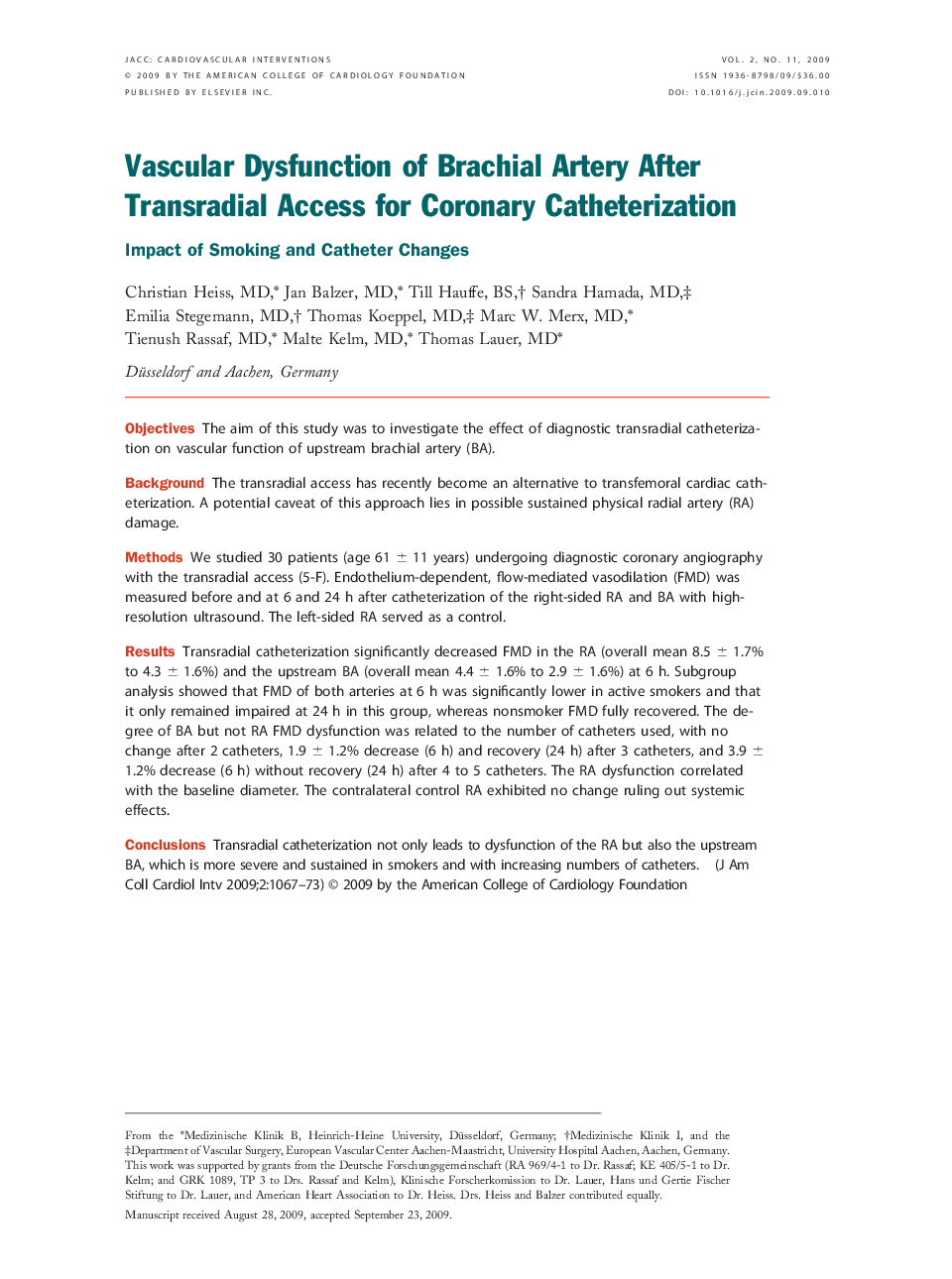| Article ID | Journal | Published Year | Pages | File Type |
|---|---|---|---|---|
| 2941342 | JACC: Cardiovascular Interventions | 2009 | 7 Pages |
ObjectivesThe aim of this study was to investigate the effect of diagnostic transradial catheterization on vascular function of upstream brachial artery (BA).BackgroundThe transradial access has recently become an alternative to transfemoral cardiac catheterization. A potential caveat of this approach lies in possible sustained physical radial artery (RA) damage.MethodsWe studied 30 patients (age 61 ± 11 years) undergoing diagnostic coronary angiography with the transradial access (5-F). Endothelium-dependent, flow-mediated vasodilation (FMD) was measured before and at 6 and 24 h after catheterization of the right-sided RA and BA with high-resolution ultrasound. The left-sided RA served as a control.ResultsTransradial catheterization significantly decreased FMD in the RA (overall mean 8.5 ± 1.7% to 4.3 ± 1.6%) and the upstream BA (overall mean 4.4 ± 1.6% to 2.9 ± 1.6%) at 6 h. Subgroup analysis showed that FMD of both arteries at 6 h was significantly lower in active smokers and that it only remained impaired at 24 h in this group, whereas nonsmoker FMD fully recovered. The degree of BA but not RA FMD dysfunction was related to the number of catheters used, with no change after 2 catheters, 1.9 ± 1.2% decrease (6 h) and recovery (24 h) after 3 catheters, and 3.9 ± 1.2% decrease (6 h) without recovery (24 h) after 4 to 5 catheters. The RA dysfunction correlated with the baseline diameter. The contralateral control RA exhibited no change ruling out systemic effects.ConclusionsTransradial catheterization not only leads to dysfunction of the RA but also the upstream BA, which is more severe and sustained in smokers and with increasing numbers of catheters.
